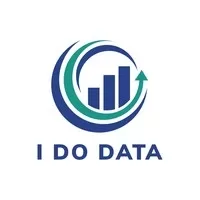SQL Server Essentials in an hour: The SELECT statement
Phillip Burton,I Do Data Limited
1:05:00
Description
Learn how to use SELECT, FROM, WHERE, GROUP BY, HAVING and ORDER in SQL Server. Create views+procedures. Export in Excel
What You'll Learn?
- Build your own SQL Server SELECT statements.
- Use the SELECT, FROM, WHERE, GROUP BY, HAVING and ORDER BY clauses.
- Encapsulate (save) your statements as views or procedures.
- Dynamically connect the results of your SELECT statements into Excel.
Who is this for?
More details
DescriptionDo you want to learn SQLÂ Server quickly?
In this course, we will look in an hour at the SELECT statement.
There are six constituent clauses in this statement:Â
SELECT - this is akin to the Print statement in other languages, and
FROMÂ - this shows your data source,
WHERE - this filters down your data source,
GROUPÂ BY - this enables the results to be summarised,
HAVING - this filters the summary, and
ORDERÂ BY - this sorts your results.
We will then look at saving your code using both views and procedures.
Finally, we'll export your reports into Excel, both statistically (copy and paste) and dynamically (so that you always have the latest reports).
In just an hour, you'll be able to create your own SELECT statements, so you can use them in SQL Server (SSMS, SSRS and SSIS) and in Excel. This is all you need to start writing and using your own code. Quick and easily.
If you have not already got SQLÂ Server installed on your machine, this course includes a link to a video which shows you how you can install for free SQLÂ Server Developer edition, together with SQLÂ Server Management Studio (SSMS). These can be installed on your laptop or desktop to use for learning purposes for as long as you need.
Who this course is for:
- This course is for you if you want to learn about SQL Server's SELECT statement.
- You can use the SELECT statement in SSMS, SSRS, SSIS and Excel.
Do you want to learn SQLÂ Server quickly?
In this course, we will look in an hour at the SELECT statement.
There are six constituent clauses in this statement:Â
SELECT - this is akin to the Print statement in other languages, and
FROMÂ - this shows your data source,
WHERE - this filters down your data source,
GROUPÂ BY - this enables the results to be summarised,
HAVING - this filters the summary, and
ORDERÂ BY - this sorts your results.
We will then look at saving your code using both views and procedures.
Finally, we'll export your reports into Excel, both statistically (copy and paste) and dynamically (so that you always have the latest reports).
In just an hour, you'll be able to create your own SELECT statements, so you can use them in SQL Server (SSMS, SSRS and SSIS) and in Excel. This is all you need to start writing and using your own code. Quick and easily.
If you have not already got SQLÂ Server installed on your machine, this course includes a link to a video which shows you how you can install for free SQLÂ Server Developer edition, together with SQLÂ Server Management Studio (SSMS). These can be installed on your laptop or desktop to use for learning purposes for as long as you need.
Who this course is for:
- This course is for you if you want to learn about SQL Server's SELECT statement.
- You can use the SELECT statement in SSMS, SSRS, SSIS and Excel.
User Reviews
Rating
Phillip Burton
Instructor's CoursesI Do Data Limited
Instructor's Courses
Udemy
View courses Udemy- language english
- Training sessions 13
- duration 1:05:00
- English subtitles has
- Release Date 2023/03/16












